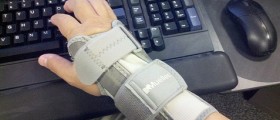
Dystonia is a condition which manifests through involuntary movements, contractions and spasms affecting a person throughout different body parts, causing him/her to commonly assume abnormal body positions.
Facts about Dystonia
Dystonia is thought to stem from issues with the nervous system and the brain. Nevertheless, one's intelligence, memory and other cognitive skills remain unaffected by this condition.
Dystonia is a rare condition even though it is one of the most frequent neurological illnesses. In fact, dystonia affects more than 38,000 people in the UK. There are no sex or age limits when it comes to risk groups and people suffering form dystonia. Regardless, in most cases, people who develop this condition are older than 40 and younger than 60.
Different Types of Dystonia
One of possible classifications of dystonia is by its underlying cause. Here, the condition is not the main cause of concern since it represents only a symptoms of some other, more important disease, affecting an individual. A stroke, brain injury, brain infection or Parkinson's disease are all common triggers of secondary dystonia.
On the other hand, dystonia which does not manifest through any other symptoms is considered to be primary dystonia.
Secondly, dystonia may be classified by the part of the body it affects. Then, if the hands or the eyes are affected, the condition is named focal dystonia, segmental dystonia appears on two related parts of the human body together, such as the neck and the shoulders and multifocal dystonia affects two or more areas which are not connected to each other like, for example, the eyes and the hands together. Additionally, one may suffer from generalized dystonia which appears on both arms or both legs together or hemidystonia, taking place on a whole half of an individual's body.
Finally, dystonia may be classified according to the age when it appears and, if dystonia appears around the eyes, affecting the muscles, it is commonly referred to as blepharospasms.
Treatment for Dystonia
Most types of dystonia are treated by botulinum toxin, administered in minimal doses, so that it is safe for medical use. This toxin is directly injected into troubled muscles, numbing the nerves which are responsible for the spasms. Yet, the injection may have several side-effects including swallowing problems due to neck injections, double vision when muscles around the eyes are treated and voice issues when vocal cords are exposed to the shot. Fortunately, the side-effects usually disappear after a short period of time, being effective against dystonia.




_f_280x120.jpg)












Your thoughts on this
Loading...